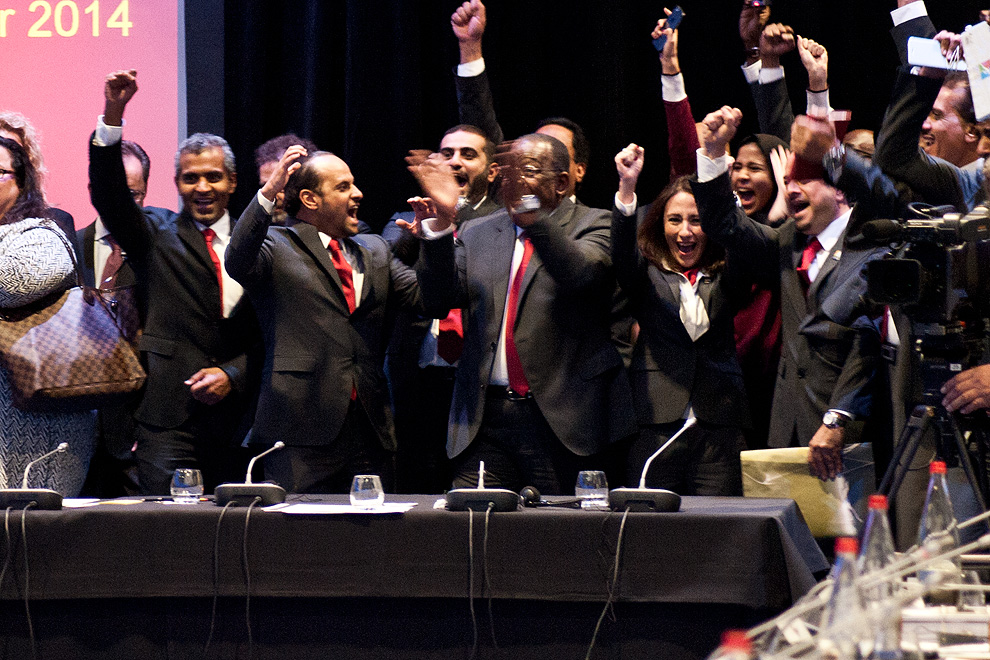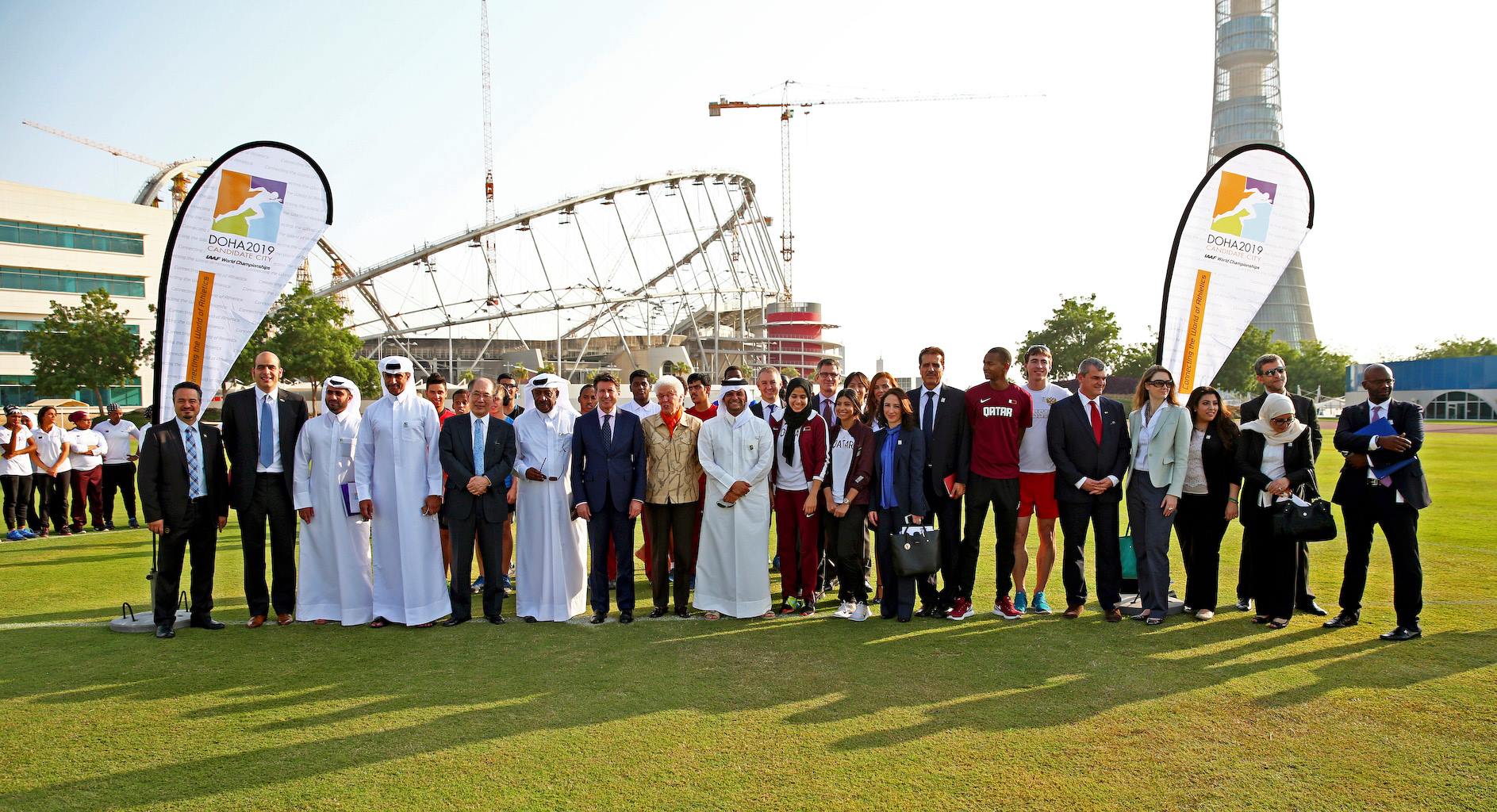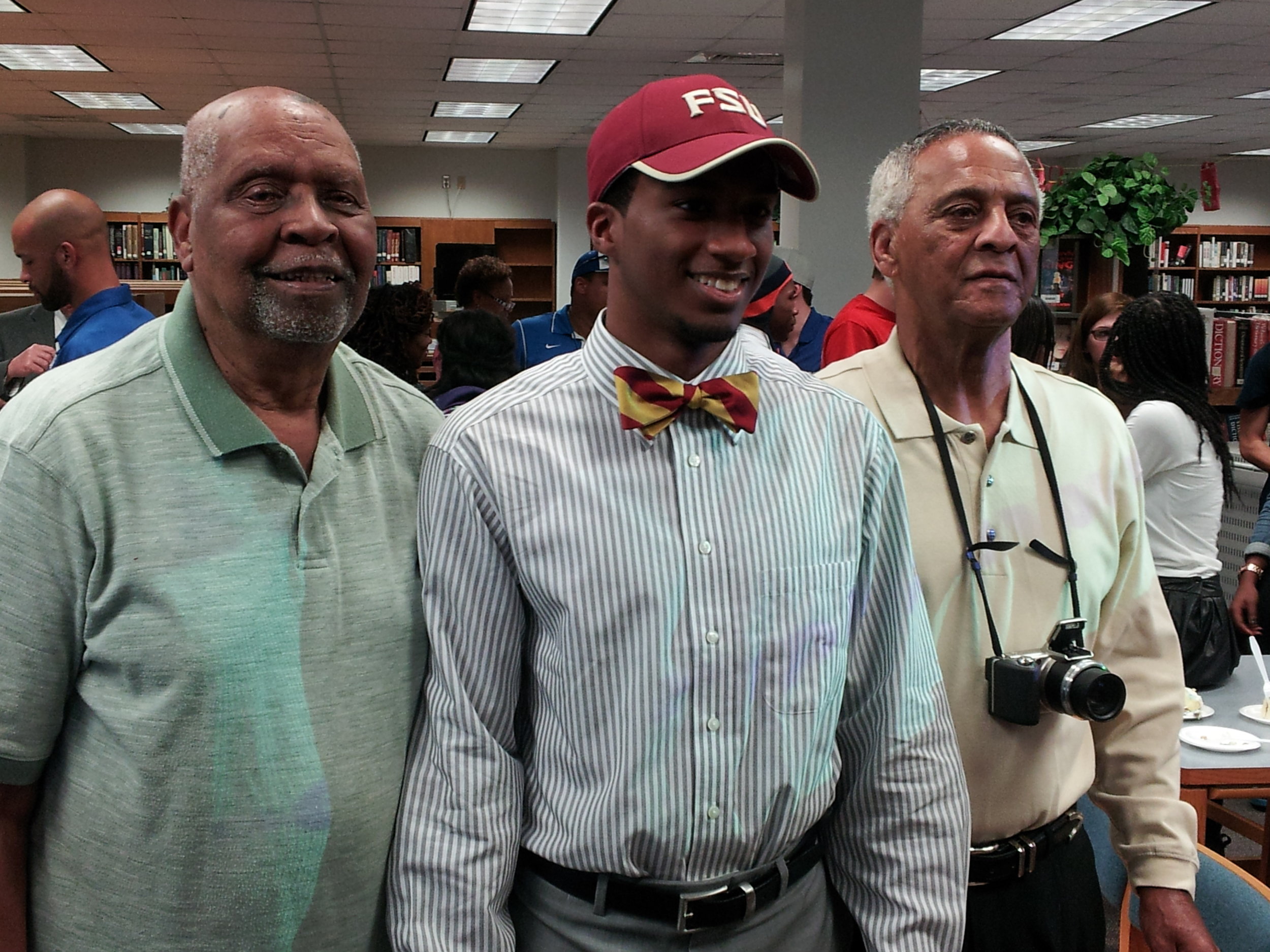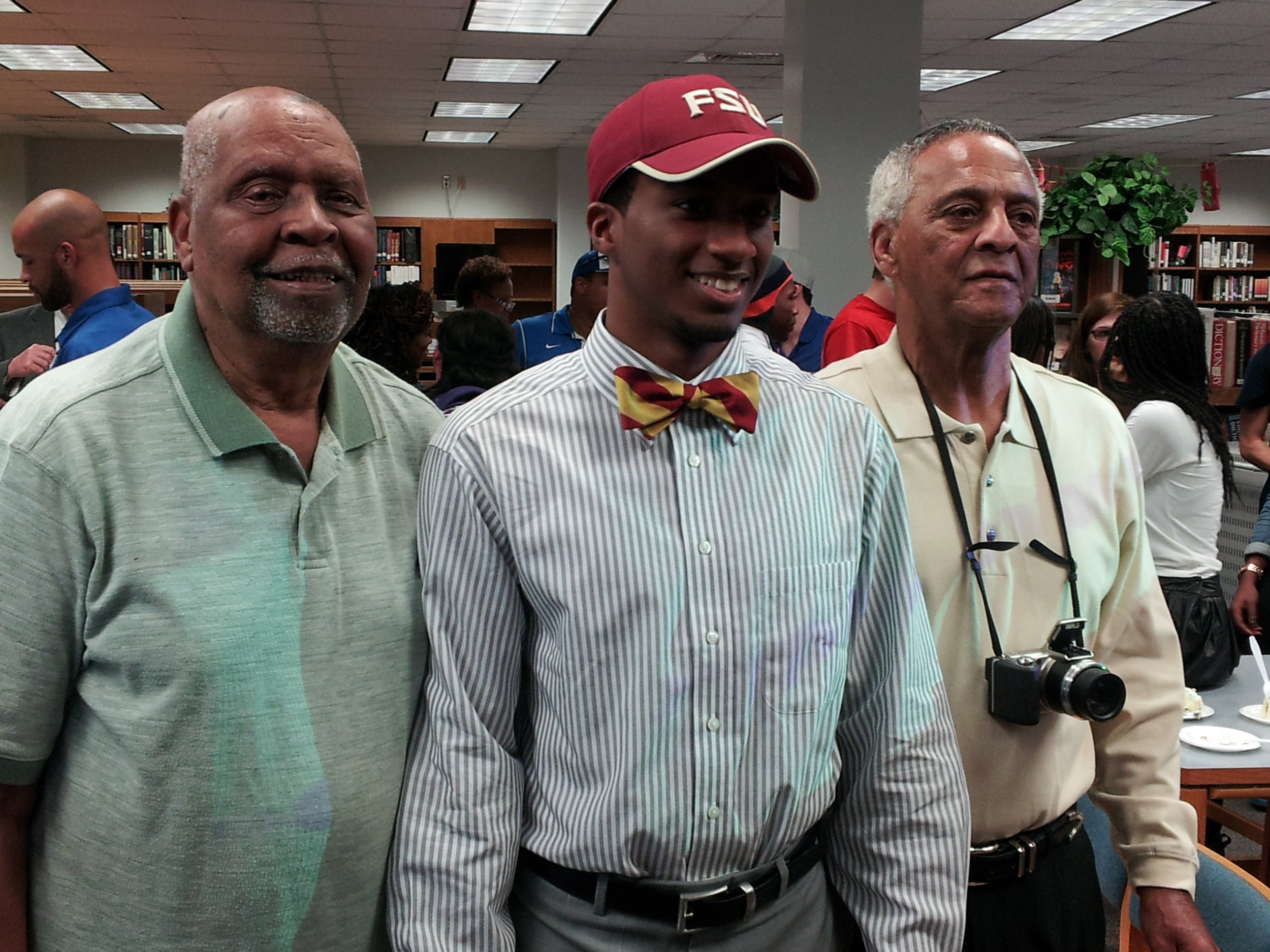EUGENE, Oregon -- It rained, hard, Sunday afternoon. Then, abruptly, it stopped. On Monday, no rain.
Was that random -- or, you know, a sign from above that Eugene's audacious bid for the 2019 track and field world championships is somehow feeling the heavenly love, too? Is this all just cosmic destiny, or what?
How is it that Eugene is not only in this thing but could actually win? For sure it could lose. But, seriously -- it might just win.

The logic of cold, hard rain says Eugene, a college town in the remote Pacific Northwest, has no business being in a contest with two world-class cities, Barcelona and Doha, Qatar. An IAAF evaluation commission, headed by Britain's Lord Sebastian Coe, the 1980s track star who is an IAAF vice president and of course served as boss of the London 2012 Summer Games, wrapped up its two-day visit Monday to Eugene; the IAAF commission visited Barcelona Oct. 14-15; it is due to go to Doha from here, with the visit there Oct. 30-31. The 2019 election is Nov. 18 in Monaco -- essentially, three weeks away.
What, meanwhile, is logic when it confronts passion? Doesn't track and field, more than anything, need passion?
These are but some of the several elemental questions underpinning this 2019 IAAF election.
As Coe -- who is relentlessly neutral about the entire 2019 process -- made plain in a news conference Monday at the University of Oregon basketball arena, it's apparent there is great enthusiasm in and about Eugene, indeed throughout Oregon, for track and field. That has nothing to do with the other two 2019 candidates; it doesn't reflect on them or the process in any way; no clues should be divined, because there are none, about whether Eugene is favored or definitely is not. The enthusiasm here is just -- obvious.
"This," Coe said, "is a community that understands track and field."
He outlined, too, five "really important values" the IAAF is looking for: the nature of the community itself; the necessary partnerships (think security, transport and the like); making sure the event is not "hermetically sealed" from life in the community; ensuring as well that the event would be used in alignment with local ambitions (think health and wellness); and, last but surely not least, the ability to use a championships to attract young people to track and field.
Now, getting down to business:
All in, there are 27 possible votes. How many of those are -- or might be -- likely to be favorable to the United States?
The outdoor worlds have never been to this country. Stanford put forth bids in 1999 and 2001. There’s abundant reason there haven’t been other bids — see above, 27 votes, in a world in which over the years “United States” has not reliably been a vote-getter.
The last Summer Olympics? Atlanta, 1996. The last Winter Games? Salt Lake City, 2002, and those were rocked by a corruption scandal.
Indianapolis played host to the 1987 world track indoors. Portland will put on the 2016 world indoors.
Aha, say the sunny-side up people! Portland!
Indeed.
This frames the crux of the matter:
Everyone connected to track and field in the United States agrees it would be a great thing to stage the worlds. Is 2019 the right time, and is Eugene the right place?
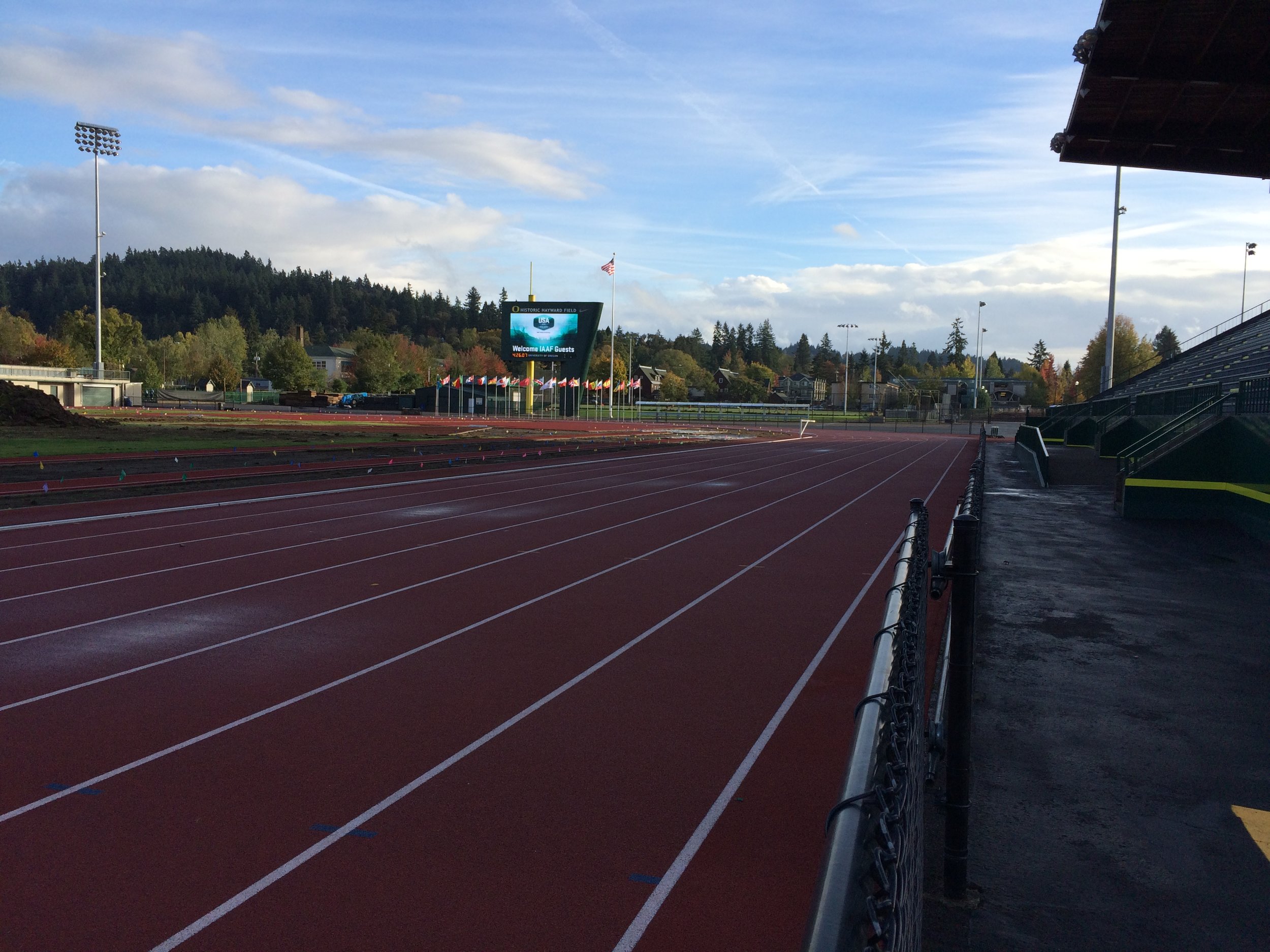
There are two theories at work:
One, the idea of having the worlds in Eugene is patently ridiculous.
Two, the dominoes may be falling just so and Eugene might sneak this one out.
In order:
No way Eugene can win, ought to win, should win, and here are just some of the reasons (among many) why:
— Eugene put on the six-day junior world championships at Hayward Field last summer. They were more than fine -- for a juniors. Guess what? The logistics of the juniors proved that Eugene is light years away from what it takes to run the nine-day, far more complex senior championships.
— Eugene is, at best, a sleepy college town far away from anywhere. It’s two hours-plus to a decent airport (in Portland). The late-night West Coast time-zone is a killer. Track and field is already a niche sport. Putting the 2019 worlds in a niche town in a niche state will further serve only to consign, indeed condemn, the sport to little or no notice in the United States for a long, long time.
-- When you are in a town not your own for nine days, it can seem like a lot longer when you are trying to discern something else to do and, especially, find places to eat.
Here was the local paper, the Register-Guard, in an editorial Sunday that can only be described as either "boosterish" or "loving" below two headlines, one that proclaimed, "Championships belong in Eugene," the other, "To a greater degree than anywhere else, track and field is in the city's DNA."
Pause here for a moment.
Disclaimer: obviously the newspaper is not part of the bid committee. Even so, this fact is difficult for non-Americans to understand and these kinds of headlines are head-scratchers in the international bid game. When will some Americans, even if well-meaning, understand that non-Americans do not appreciate that we are not the end-all, be-all in the entire world?
Do they comprehend at the Register-Guard that because of a crazy thing called the "internet" this stuff can get read now beyond the borders of the United States? Do they appreciate that these headlines were the talk -- with heads shaking in bewilderment if not dismay -- among those in the know Sunday night?
Who says any championships "belong" in Eugene? The sense of entitlement that word connotes is precisely the attitude the U.S. Olympic Committee has spent nearly five years not just running but sprinting away from.
And what wise minds on the newspaper board decided that Eugene, Oregon, had more in its cultural heart and soul than literally "anywhere else" on Planet Earth? For real?
Anyway, from the editorial:
"A member of the evaluation committee, torn by having to choose among a twilight walk on Doha’s corniche, an evening at a Barcelona tapas bar or an August afternoon at Hayward field, might consider stopping a runner at random on one of Eugene’s trails, and asking what a good split time would be in a 1,500 meter race.
"That should settle the matter in Eugene’s favor."
Or -- a member of the commission might stop that same runner and ask where in the hell you might eat on Day Eight in the greater Eugene scene. Don't miss Track Town Pizza (but not for a week straight). So what's an out-of-towner to do? Not everyone is going to Marché, next to the boutique Inn at the 5th. Again, what to do? Elmer's for comfort food in Springfield, hard by the I-5 and Beltline Road? (Bonus: Gateway Mall and Target just down the street!) How do you think Elmer's would stack up against the amazing seafood in Doha or the paella in Barcelona?
— Consider this cycle: Beijing 2015, London 2017, Somewhere 2019. After the Summer Games in 2020, wouldn’t it makes sense — in the same way it did to make post-Olympic use of the stadiums in Beijing and London — to go back to Tokyo in 2021? Further, assuming the United States wins in 2017 for the Summer Games in 2024, wouldn’t it again make eminent sense to stage the test event in the winning city in 2023 — just for the sake of conversation in, say, Los Angeles?
If you were trying to grow the sport of track and field in the United States, would you rather have a world championships at Hayward Field or at the LA Memorial Coliseum, site of the 1932 and 1984 Summer Games? Hayward was repeatedly described Monday as "iconic." You want "iconic"? Let's match Hayward against the Coliseum.
Even USA Track & Field has already recognized that LA maybe has something going for it: the U.S. marathon Trials are going to be there in 2016.
Yes, yes, yes -- Los Angeles and Eugene share the same time zone. But LA has the ESPN and Fox studios. In LA, the worlds would be a story, maybe the story. Remember, there's no NFL team in LA, and unless that changes, in late August a track worlds might well own SoCal.
Thank you, downer cows, for your views. Your time is up.
OK, cheery optimists. Your turn:
— The outgoing IAAF president, Lamine Diack, has always wanted a worlds in the United States. Diack's political acumen should not be underestimated, even on his way out.
— Since 2010, the USOC, and in particular board chairman Larry Probst and chief executive Scott Blackmun, have traveled the world, emphasizing relationship-building and stressing that the United States is keen to be a partner in the so-called “Olympic family.”
Eugene’s campaign is clearly a major USOC priority: Blackmun, recovering from shoulder surgery, was nonetheless here Sunday, when the rain was coming down hard, to make the case to the IAAF. Look, a 2019 worlds would be the biggest Olympic sports event in the United States since Atlanta 1996. After the Summer Games themselves and soccer’s World Cup, the track championships are the next big thing — so this is, indeed, a very big deal.
How big? Oregon Gov. John Kitzhaber appeared Sunday evening at the traditional welcome dinner.
"We’re at the vanguard of a national quest — a quest to bring the world back to the United States,” Vin Lananna, the senior University of Oregon athletic director and president of the local entity called TrackTown USA that is pushing the bid, was said to have told the IAAF working group Sunday behind closed doors.
— Maybe, just maybe, the world of Olympic sport is increasingly hospitable to the Americans. The alpine ski worlds are in Vail and Beaver Creek this coming February; that is the biggest event on the winter sports calendar. Is the IAAF going to be the first of the major summer sports to show that it’s time to come back to the USA as well — to be, if you will, the group of thought leaders showing the way?
— USA Track & Field, often maligned over the years, has quietly been on something of a positive roll, building up sponsors and momentum since Max Siegel took over as chief executive two-plus years ago. A 2019 Eugene victory would give the sport five years in the national spotlight — with the possibility of five more if the USOC were to win for 2024.
Siegel said Monday, “An event of this magnitude on U.S. soil will allow us to galvanize and focus this entire country over a sustained period of time in bringing awareness and promoting the sport.
“What it does it allows you to come up in a strategic way in engaging fans and sponsors, further educating them about the sport and the commercial opportunities available in the space.
“We'd have five years to rally everybody.”

-- It's no secret that Eugene and seemingly most of Oregon is Nike country. USATF has a new deal with Nike. The IAAF and adidas have long been partners. But, you know, what if?
— Perhaps, too, it is now the case that in our increasingly convergent 21st century you don’t need a big city as the stage for a world championships. The 2015 FINA swim championships are in Kazan, Russia, in the dead-center of nowhere. Kazan?! Plain fact: wherever you are, television and social media carry the event to the world.
Reality checks:
Eugene has two primary weaknesses — size and venue.
Full details of the Eugene 2019 plan have not been made public.
But enough is known about what matters.
When the U.S. Olympic Trials are on, Hayward Field holds roughly 20,000 people. That’s not anywhere enough for a worlds.
If Eugene wins for 2019, Hayward would be renovated with seating for 32,000. If the bid is not successful — and the plan has always been for Hayward to be re-done — the facility would be built out so it can play host to NCAA championships on a regular basis.
For emphasis, none of this would be public money — all of it would come from private fundraising.
You can bet, too, that a re-done Hayward would be a world leader in technology and innovation. Lananna, at Monday's news conference, dropped sly hints about just that.
Secondly, accommodation.
In Eugene right now, the count of existing hotel stock — that includes university residence halls and housing, which can be used for athletes and others — stands at roughly 11,000. Don’t be quick to dismiss some of that university housing; some is pretty darn nice condo-style stuff.
The rise of the Oregon football program means that Autzen Stadium is now packed on multiple football Saturdays every year. Where do those people stay? If you go 90 minutes out from Eugene, that total of 11,000 rises to 17,000 rooms and 20,000 beds.
Meanwhile, nine new properties with over 3,000 rooms are already in the works.
Speaking of convergence — what if this Eugene 2019 bid marks the perfect coming-together of relationships, partnerships and opportunity?
“We have a strong desire to host this championships,” Lananna said. “This is what we do here. We work at it: 24/7, 365 days a year, we do track and field.
“We have the resources, we have the commitments, we have the community behind us. Therefore we can do it.
“Lastly, we will pack the stadium every single day for every single event for the world championships. Every single young man, every young woman will be treated to the experience of their lives in the sport they have dedicated their lives to. That is why we are trying to host the championships. This is not a legacy for Eugene or for the United States. This is a legacy for the sport. This IAAF council,” he said, “has an opportunity to create their own legacy.”








